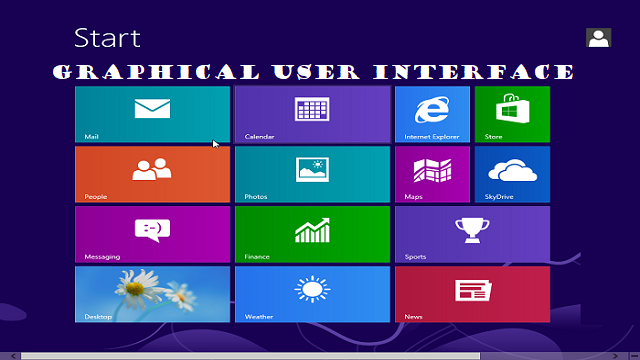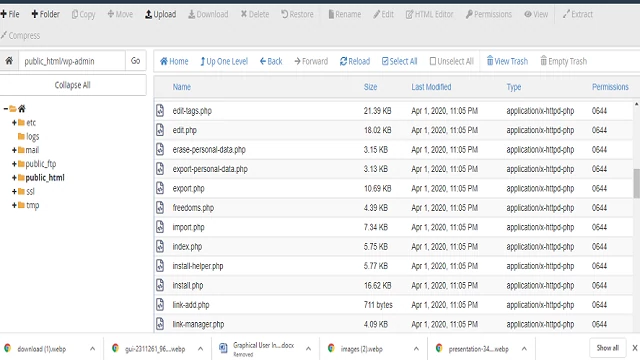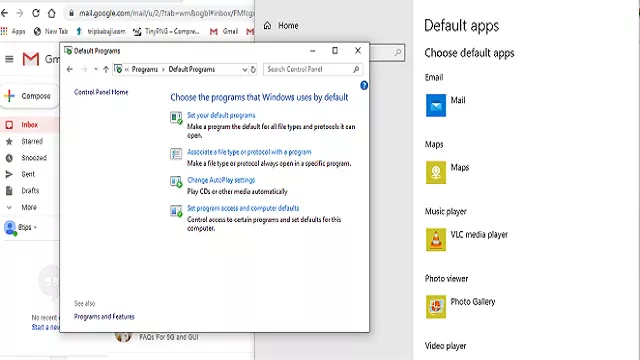Graphical User Interface (GUI) – How it Works, Features & Elements

GUI is a form of user interface that allows users to interact with electronic devices through graphical icons and an audio indicator such as primary notation, instead of text-based user interfaces, typed command labels or text navigation.
This post will discuss What is a Graphical User Interface (GUI), how GUI works, its Features, Elements, Advantages and Disadvantages.

What is a GUI in Computer?
The GUI stands for Graphical User Interface. It is a system for interactive visual components of computer software.
The graphical interface shows the objects that transmit information and indicates the actions that the user can perform. When the user manipulates the object, the colour, size or visibility of the object changes.
GUI Contains object icons, cursor buttons.

These graphics can get enhanced by sound or visual effects such as transparency and shadows. Compared to a text-based command-line interface (MS-DOS) or a Unix-like operating system shell.
The graphical interface is considered more intuitive. The graphical interface was developed in 1981 by Alan K., Douglas Engelbart and other PARC Xerox researchers. So on January 19, 1983, Apple released the Lisa computer with a graphical interface.
How GUI works?
GUI helps the computer users to interact with the computer by relocating the pointer on the screen and also pressing a button. There are several ways to move the pointer on the screen.
Initially, the “mouse” (a box the size of a hand with threads) used a ball that rolled around “mouse pad” (a stable horizontal surface designed for this). But has now get detected with a laser.

The mouse tail, which usually does not move, has been replaced by infrared or wireless transmission. The primary work remains the same. The sensor monitors the position of the mouse movement.
When pressed, the button is getting transferred to the computer, which translates it into movements of the computer screen or other actions.
The computer program always checks the position of a pointer on the screen, the movements of mouse and pressure on the buttons. The program decides what the user wants to do with these actions and tries to do it.
Related Articles>>>
- Full Form of Computer- Its Generations, Parts and Types
- 5G Technology – How it Works, Features, Advantages & Disadvantages
- CBR File – Steps to Convert and Open in Various Devices
- Server- Types, Purpose, Advantage & Disadvantage
Features of a GUI
The GUI Features (Graphical User Interface Features) are:
- They are easy to use for beginners.
- You can easily exchange information between programs using copy and paste or “drag and drop”.
- GUI uses a more amount of memory and also processing power. For advanced users, use may take longer than the command-line interface.
- Simple tasks can reward experienced users when a lot of work is required.
- When discussing the user interface, keep in mind that Windows XP, Windows Vista, Apple OSX, and Ubuntu have a graphical interface.
Features of a Good GUI
The Features of a Graphical User Interface are:
- An excellent user interface must meet the following conditions.
- Attractive
- Allows users to test different options quickly.
- Easy to use
- Use the right colours in critical areas.
- Use easy-to-understand words for user type
- have a Reference document.
Elements of Graphical User Interface
The GUI mainly uses the visual elements. These factors determine the appearance of the graphical interface. Some of them are getting defined and explained below.

Features of User Interface in Windows
Displays information on the screen. Using Windows is very easy. Click the icon to select or deselect. The user can also drag the window to the right place, which is comfortable to the user. In a multitasking environment, multiple windows can get opened simultaneously and, they all have different functions.
Characteristics of Graphical User Interface
- Sophisticated Visual Presentation
- Pick-and-Click Interaction
- Restricted Set of Interface Options
- Visualization
- Object Orientation
- Use of Recognition Memory
- Concurrent Performance of Functions
Menu
The menu contains a list of options for the user to choose from. The menu bar appears horizontally on the screen, just like a menu. Click a choice in this menu and open the drop-down menu.
Other types of menus are only displayed if the user has performed a specific action in the context menu—for example, right-click. When you had done, a menu will appear below the cursor.
Icon
Small images (files, programs, web pages, etc.) can get used to display the GUI. This image is called an icon. Clicking on the icon gives you instant access, so you can use the icon to open a document or launch the program quickly.
Management
You can also use graphical commands to read and manipulate information about the application. Also called a widget. Usually, widgets are get used to view a list of similar items and navigate the system using the Connections tab—data processing via logos, switches etc.
Label
The label is get connected to the display window. It normally includes a text label or a graphic icon. If you are interested in a tabbed widget, several tabs allow you to edit the widget.
This tab is get used in various web browsers (Internet Explorer, Firefox, Opera, Safari, etc.). Users can open multiple web pages in a web browser and edit pages with tabs.
Advantages of Graphical User Interface
- Non-technical convenience:
Excellent graphical interfaces for technicians or beginners often simplify life. For example, users can quickly complete an activity with a few clicks of a button.
Non-technology can also effectively manage in-store products and software used to calculate the inventory. Also, it is easy for everyone to listen to music in the car.
- Drag and drop function
Most software has a drag and drops function to manage complex tasks easily. It’s like dragging a folder. It is also beneficial in mobile games. Drag and drop are excellent in many graphics programs.
- It looks better than a text interface
In the text interface, it is not possible to select only limited parameters, and it is difficult to navigate with it. For inexperienced people, the text interface is challenging to understand and use. A graphical interface allows the user to use any tool by detecting symbols and buttons.
- How to practice the link
After clicking and performing certain functions, you can use the link. When I saw buttons or clicks/mouse movements, they did several things. It is handy for the working speed.
- Easy to use
Users can easily access the system without knowing any further details. Installation is simple, and you can get started at any time. Most software is the key to an excellent interface that can show the complexity of your work and only the necessary information hidden from the user.
- People with Disabilities
Modern science can detect eye and finger movements. It is very useful for people with disabilities. Currently, most programs use this feature to simplify the lives of people with disabilities. Software and websites are easy to use for certain activities.
Disadvantages of Graphical User Interface (GUI)
- High costs, complexity in development
Beautiful designs are difficult to create and may require additional hardware support with high-quality games. it takes up a lot of space and memory on the device. so it requires highly qualified personnel to develop it.
- Slower than command-line programs
Command-line tools such as MS dos execute various commands to perform operations quickly. However, performing the same action in the GUI takes longer to complete the task.
- Special attention is required
When driving a car, operating the music/radio in the car needs attention. And this can interfere with our driving.
- Use a flat-screen
Some graphic objects cannot get accurately displayed on an aeroplane. You can use the joystick on an aeroplane to do most of the work. because a flat-screen is practical. It limits the interface.
General FAQ
What kind of graphical interface?
There are five types of user GUI interfaces.
1. Command-line (CLI)
2. Graphical User Interface (GUI)
3. Menu method (MDI)
4. Based on the module (phbi)
5. Natural language (nli)
What are the examples of graphical interface?
The Graphical User Interface Example consists of elements such as images (e.g., icons and arrows). The main parts of the GUI are pointers, icons, windows, menus, scroll bars, and automatic input devices. Standard graphical interfaces are associated with Microsoft Windows, Mac OSX, Chrome OS, GNOME, KDE, Android.
How would you describe the graphical interface?
GUI. It is a “graphical interface,” pronounced “grill.” It is a user interface with graphic elements (windows, icons, buttons, etc.). This term was coined in the 70s to distinguish text interfaces from graphical interfaces such as command-line interfaces.
Also Read:
